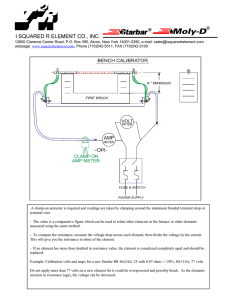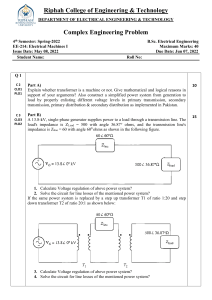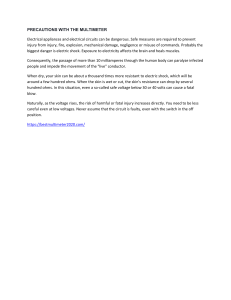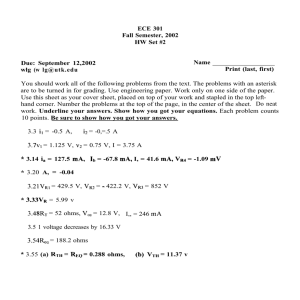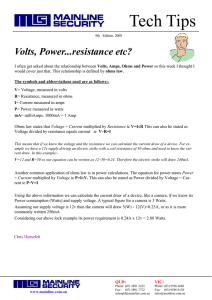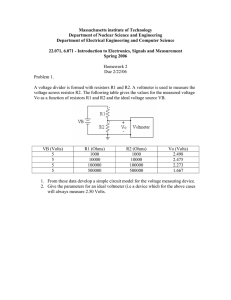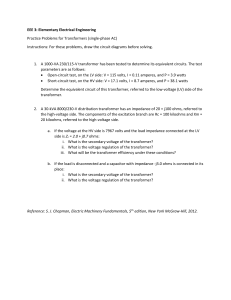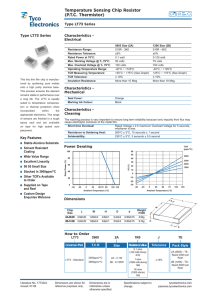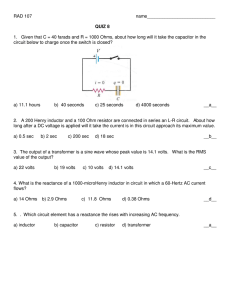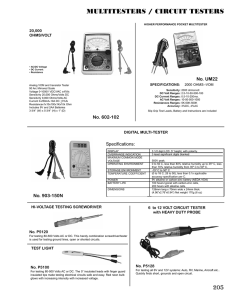Safety
advertisement
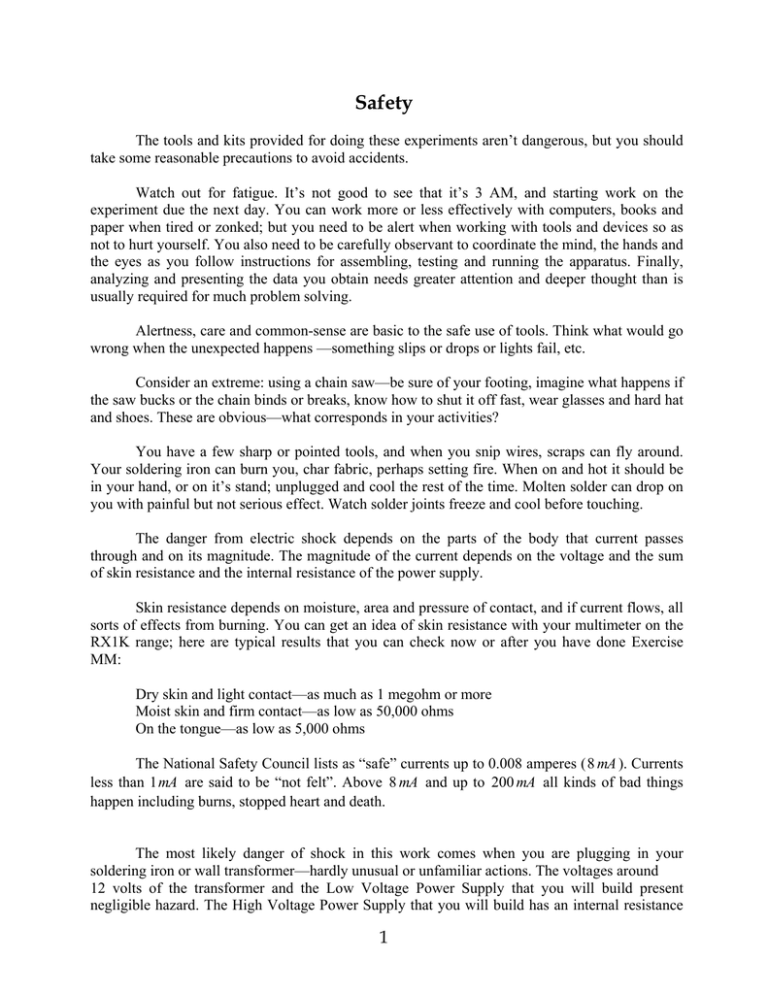
Safety The tools and kits provided for doing these experiments aren’t dangerous, but you should take some reasonable precautions to avoid accidents. Watch out for fatigue. It’s not good to see that it’s 3 AM, and starting work on the experiment due the next day. You can work more or less effectively with computers, books and paper when tired or zonked; but you need to be alert when working with tools and devices so as not to hurt yourself. You also need to be carefully observant to coordinate the mind, the hands and the eyes as you follow instructions for assembling, testing and running the apparatus. Finally, analyzing and presenting the data you obtain needs greater attention and deeper thought than is usually required for much problem solving. Alertness, care and common-sense are basic to the safe use of tools. Think what would go wrong when the unexpected happens —something slips or drops or lights fail, etc. Consider an extreme: using a chain saw—be sure of your footing, imagine what happens if the saw bucks or the chain binds or breaks, know how to shut it off fast, wear glasses and hard hat and shoes. These are obvious—what corresponds in your activities? You have a few sharp or pointed tools, and when you snip wires, scraps can fly around. Your soldering iron can burn you, char fabric, perhaps setting fire. When on and hot it should be in your hand, or on it’s stand; unplugged and cool the rest of the time. Molten solder can drop on you with painful but not serious effect. Watch solder joints freeze and cool before touching. The danger from electric shock depends on the parts of the body that current passes through and on its magnitude. The magnitude of the current depends on the voltage and the sum of skin resistance and the internal resistance of the power supply. Skin resistance depends on moisture, area and pressure of contact, and if current flows, all sorts of effects from burning. You can get an idea of skin resistance with your multimeter on the RX1K range; here are typical results that you can check now or after you have done Exercise MM: Dry skin and light contact—as much as 1 megohm or more Moist skin and firm contact—as low as 50,000 ohms On the tongue—as low as 5,000 ohms The National Safety Council lists as “safe” currents up to 0.008 amperes ( 8 mA ). Currents less than 1mA are said to be “not felt”. Above 8 mA and up to 200 mA all kinds of bad things happen including burns, stopped heart and death. The most likely danger of shock in this work comes when you are plugging in your soldering iron or wall transformer—hardly unusual or unfamiliar actions. The voltages around 12 volts of the transformer and the Low Voltage Power Supply that you will build present negligible hazard. The High Voltage Power Supply that you will build has an internal resistance 1 of about 700,000 ohms, so if you get across it with it turned up to 1,200 volts you might have about 2 mA passing through you—hardly noticeable except as a weak burn if you allow it to arc to your finger; a feeling that disappears if you grab the contact firmly. Instructions that come with various products often contain long lists of warnings, against all sorts of dangers, some pretty far-fetched. These warnings, some reflecting a sort of paranoia, are there from a mix of concern for the well-being of the customer and fear of lawsuits when weird accidents happen. However, to stay safe, nothing takes the place of alertness, care and common sense. 2
